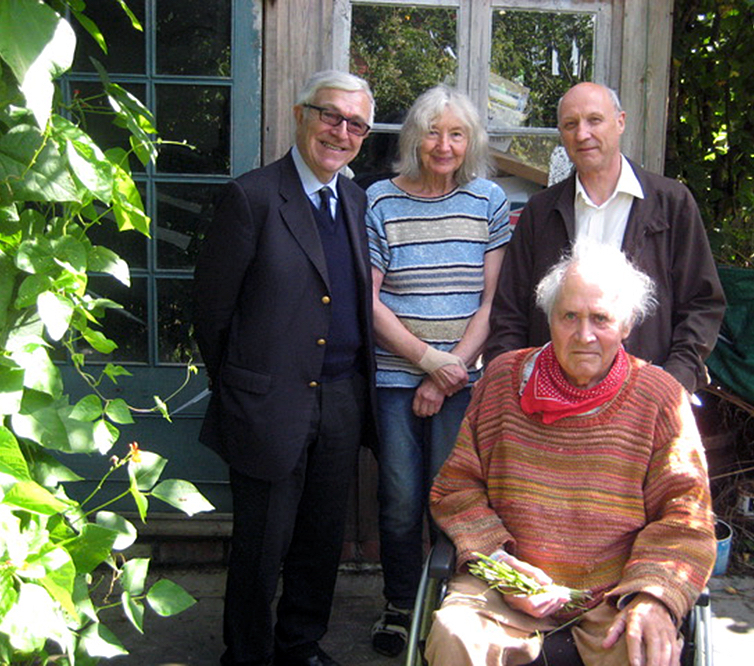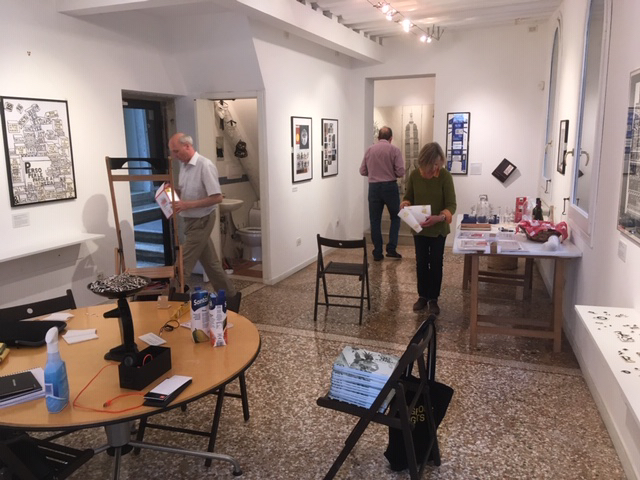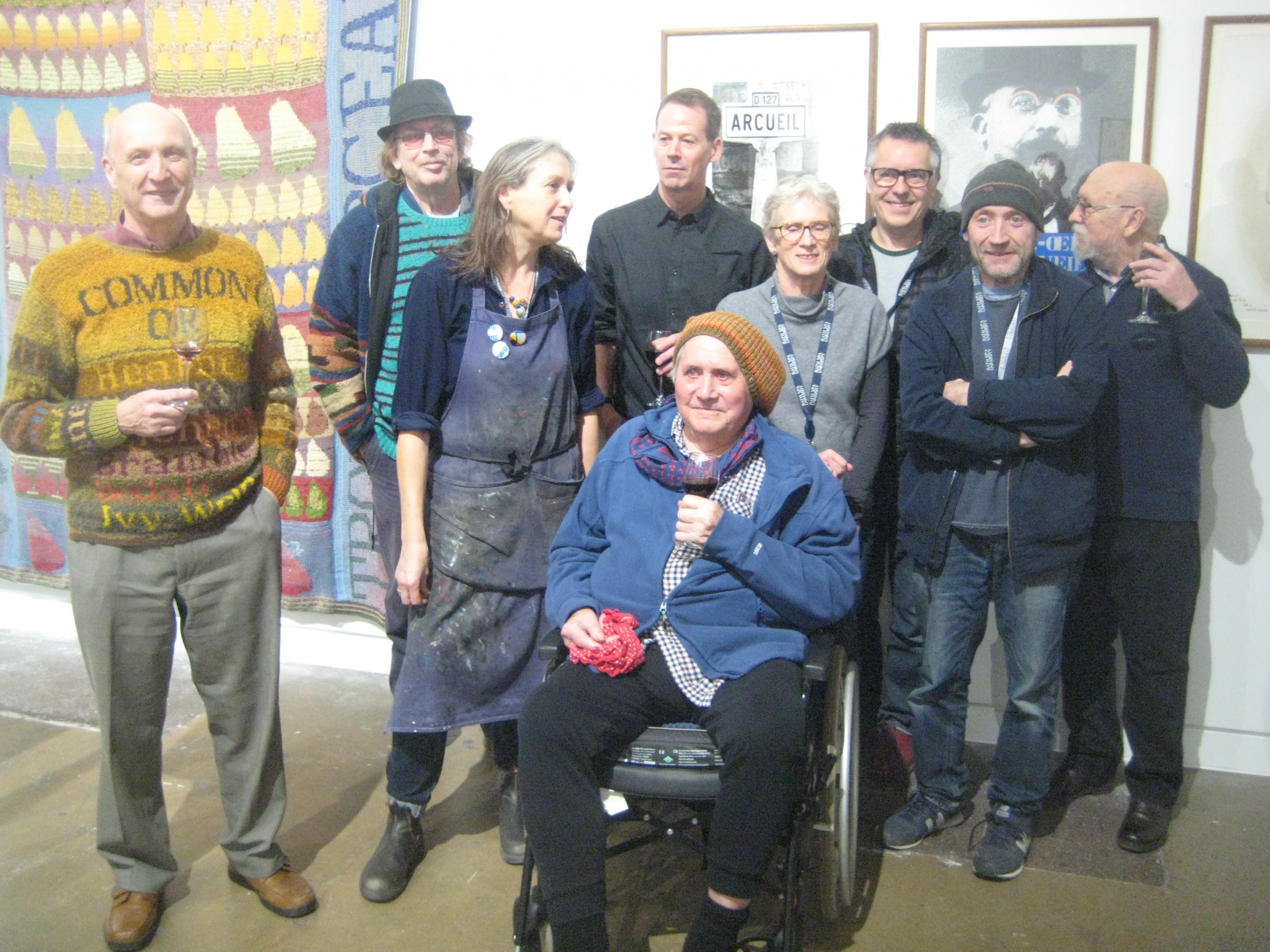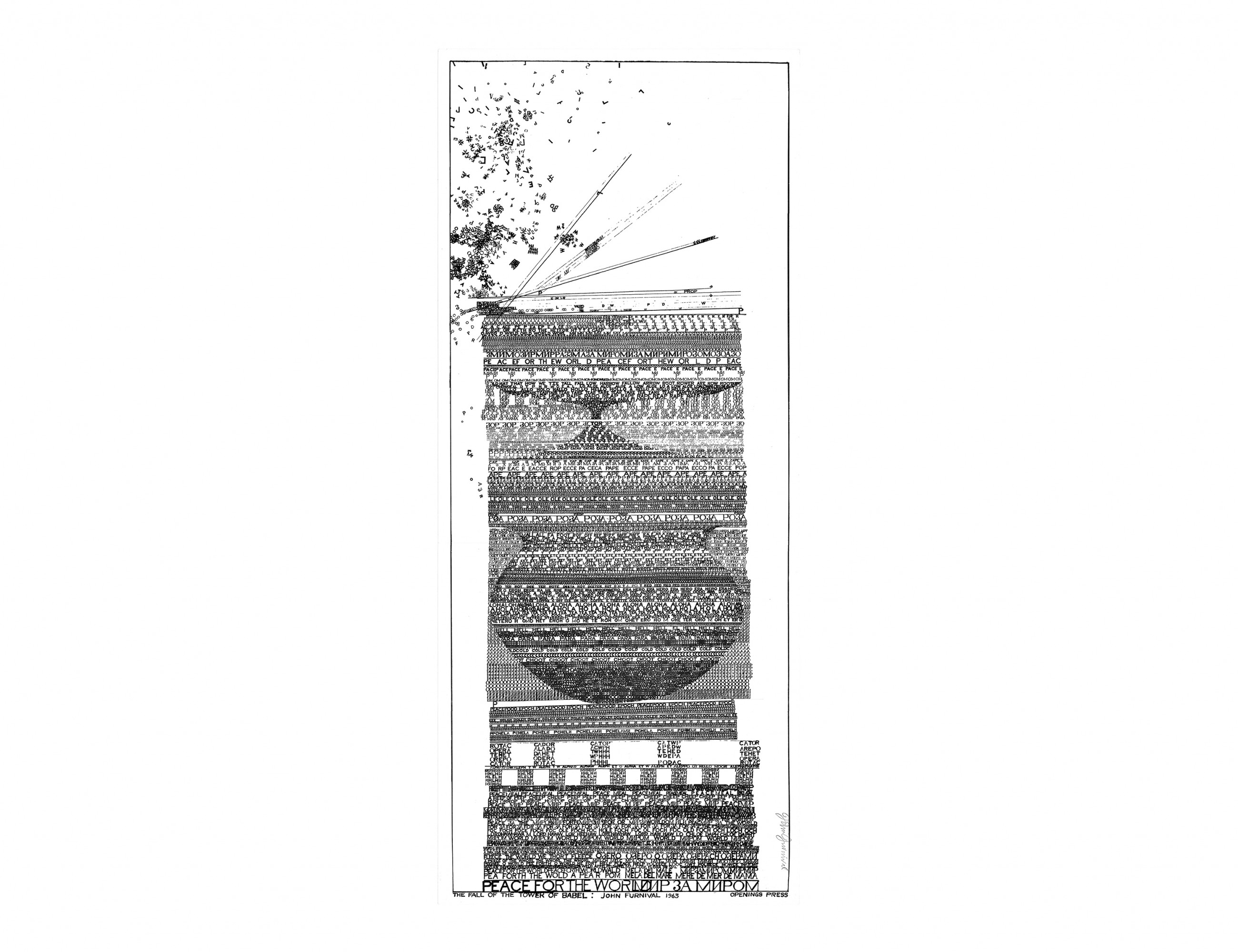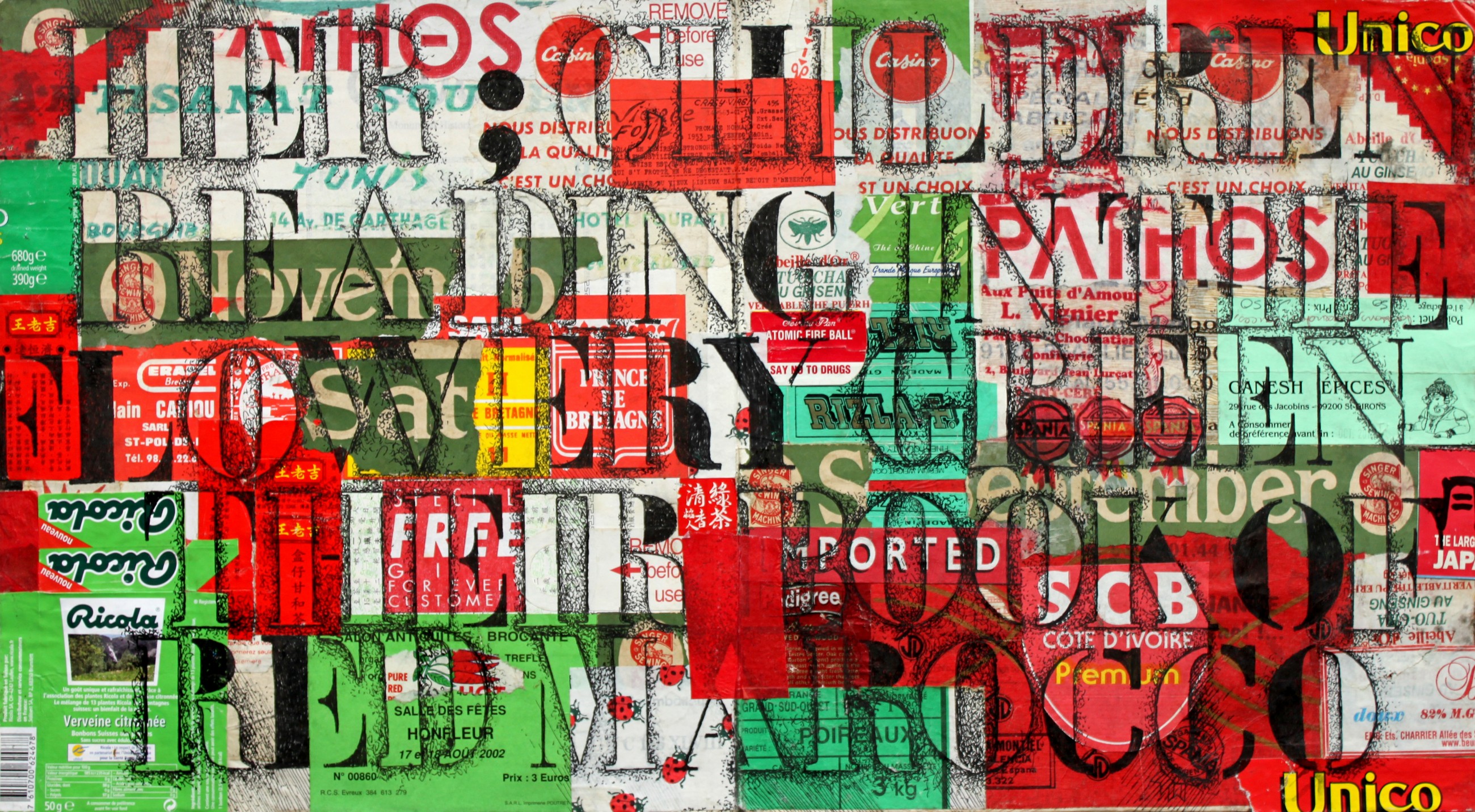John Furnival (b.1933; d. 2020) described himself as a drawer; a drawer of landscapes, personages and wordscapes. He was a student at the Royal College of Art and subsequently taught for over thirty years at Bath Academy of Art, Corsham, beginning in its seminal 1960s-70s period. Together with Ian Hamilton Finlay, dom Sylvester Houédard, Henri Chopin and Tom Phillips, he developed the practice of (minimalistic) Concrete Poetry to pioneer (maximalistic) Visual Poetry. He was a founder of Openings, of Satie's Faction (dedicated to the Franco-Scottish composer Erik Satie), and of Openings-Closings. Openings and Openings-Closings are small presses set up mainly for the dissemination of Concrete and Visual Poetry. Although born and educated in London, John lived for most of his life in the vicinity of Nailsworth (Gloucestershire) where drew and gardened, enjoyed good food and wine, and relished the company (especially the conversations and debates) of friends and relatives. John had exhibited in many group exhibitions, from the first international exhibition of ‘Experimental Poetry’ in Oxford 1965, to ‘The New Concrete: Visual Poetry in 21st Century’ at the South Bank Centre 2015. His artworks are in many private and public collections worldwide, including the collections of the Tate, the Arts Council, the British Council, the Getty collection and the Sackner Archive of Concrete and Visual Poetry in the USA.
Timelines (compiled by Bernard Moxham)
1933 (May) Birth of John Furnival in London.
1940 (Oct) Birth of Astrid Furnival (née Belling) in Stendal, Germany.
1944 John attends South London’s Aske’s Haberdashers’ School. Its motto, Serve and Obey, is not one that attracts itself to John!
1951 John attends Wimbledon School of Art (London).
1945 With her grandmother, Astrid escapes the advancing Russian army in her pram.
1954 John does National Service. Recognising his linguistic talents, he is seconded to the War Office to translate Russian documents, having received intensive tuition in the language in Fife (Scotland). He sits with a group of translators in Whitehall that has been well-characterised by Dennis Potter in his play, Lipstick on your Collar.
1957 John leaves espionage to attend the Royal College of Art at the same time as David Hockney , Ron Kitaj, Joe Tilson and Peter Blake. Astrid arrives in London as an au pair.
1959/60 John wins a ‘Rome Scholarship’ from the British Council to travel to Europe. He graduates from the Royal College of Art with a pass degree that he ascribes to his impersonation of Carel Weight at a student Christmas cabaret and to his disdain for Action painting. John teaches at Cheltenham and Stroud Art Schools and moves with Astrid into Rowden Cottage (Hazelwood, Nailsworth, Glos). This cottage, isolated well above the town, is sans water and electricity. It was previously the abode of Jacob Bronowski. Now known to the locals as "The Artists’ Cottage", it was frequented by friends and collagues, including David Hockney. In this year, John begins teaching at Bath Academy of Art, Corsham.
1960 John marries Astrid in Cornwall, officiated by the Reverend Rham at the Church of St Ewe. Birth of Eve Furnival.
1962 John wins first prize at Bristol’s Arnolfini Gallery Open Competition. Birth of Jack Furnival.
1963 John and Astrid become friends and colleagues of dom Sylvester Houédard (dsh) and they move from Rowden Cottage to Rooksmoor House, Woodchester.
1964 John has exhibitions at the Arnolfini Gallery (Bristol) and the Piccadilly Gallery (London). With dsh and Edward Wright, John founds Openings (Press). He creates one of the first of Ian Hamilton Finlay’s series of ‘poem-prints’ on the theme of the Great Bear constellation. Birth of Harry Furnival.
1965 With the poet, Ronald Johnson, John produces Satie’s Sports and Divertissements (published by Ian Hamilton Finlay’s Wild Hawthorn Press). John features prominently in the exhibition Between Poetry and Painting at the ICA (London).
1966 With dsh, Kenelm Cox and Charles Verey, John organises the Arlington Une exhibition; a seminal event in the history of visual poetry. With dsh and Kenelm Cox, John curates a ‘participatory exhibition’, The Golden Mile, at the Arnolfini Gallery (Bristol).
1965/67 John is commissioned by Ian Hamilton Finlay to produce illustrations for Wild Hawthorn Press’s Poor.Old.Tired.Horse.
1967 John and Jonathan Williams produce a book, The Lucidities, published by Turret Books. John features in the book Concrete Poetry – An International anthology, edited by Stephen Bann and also in Anthology of Concrete Poetry, edited by Emmett Williams for Something Else Press. One-man show for John takes place at the Galerie Riquelme (Paris) and John contributes to the visual poetry events at the First Brighton Festival (curated by Stephen Bann). John and dsh organise the exhibition Freewheel at the Midland Group Gallery (Nottingham). He helps organise Arlington Two and exhibits a screen, Tours de Babel Chargées en Ponts, at the Fifth Biennale de Jeunes (Paris). Purchase award by the Arts Council of John’s screen Europa and her Bull.
1968 John features in Concrete Poetry: A World View edited by Mary Ellen Solt (Indiana University Press) and has a one-man show at the Ikon Gallery (Birmingham). He helps organise Arlington Quadro.
1969 John organises a Ken Cox memorial exhibition and produces an accompanying memorial folder. He features at the Unlimited Art exhibition at MOMA, Oxford. Openings publishes After the Russian, a joint venture of John and Ian Hamilton Finlay.
1970 John appears in The Word as Image, edited by Berjouhi Bowler (Studio Vista), and in Imaged Words and Worded Images, edited by Richard Kostelanetz. His work appears at the Exhibition of Contemporary Poetry in Tokyo and at The Word as Image show in New York. He also features at the Stedelijk Museum (Amsterdam) show Concrete Poetry. With students and colleagues, John organises the DOROTHY events at the Bear Lane Gallery (Oxford) that usher in happenings and interactive art events. It is at this show that Astrid Furnival begins her collaborations with John.
1971 A John Furnival’s retrospective exhibition is held at Coelfrith Arts Centre (Sunderland). John and Thomas Meyer write The Bang Book for Jargon Press and John features in Ou numbers 22, 26/27 and 30/31 (compiled by Henri Chopin). He follows up the DOROTHY show with Dorothy’s Umbrella’s at the ICA (London) and the Bristol Arts Centre.
1972 Michael Horovitz publishes The Wolverhampton Wanderer and exhibits associated artworks (including drawings from John) at the National Book League (London). John Furnival contributes to an exhibition at the Arnolfini Gallery (Bristol). Publication by Editions Brunidor (Liechtenstein) of the folder, Three Artists, Six images (John Furnival, Henri Chopin, Tom Phillips). With the printmaker, John Vince, John wins the International Print Award at the Bradford Biennale.
1973 John participates in an international group exhibition of concrete and visual poetry in Livorno, Italy. He also exhibits in Eurovispo at Burleighfield House (Buckinghamshire), alongside dsh, Donato Cinicolo and Hansjörg Mayer (curated by Clive Adams).
1974 Publication of GLOUP and WOUP by Bob Cobbing, featuring John, dsh and Ken Cox for the GLoucester grOUP. A one-man exhibition of John’s work is held at Thumb Gallery (London). The Tate Gallery (London) purchases a sprint by John, Xmas Star, that was commissioned by Ian Hamilton Finlay.
1975 Formation by John and Astrid Furnival of Satie’s Faction to celebrate the fiftieth anniversary of the death of the Franco-Scottish composer, Erik Satie. The Erik Satie Folder is consequently produced. The Arts Council purchase John’s drawing, Wych Countree Has the Elm Disease – The Dawn of the Age of Leisure.
1977 An exhibition of work by John Furnival and Nick Cudworth is held at the Festival Gallery, Bath.
1979 John exhibits with Tom Phillips at the Thumb Gallery (London). Circle Press publish the book Blind Date by John and Thomas Meyer. John exhibits at Münster (Westfälischer Kunstverein). The British Council purchases a large screen by John Furnival, How Big Was My Ben, one of eight works they now hold in their collection. John features at the São Paulo Bienal (Museu de Arte Moderna) and subsequently at the British Council offices in Buenos Aires.
1979 – 2010 Numerous contributions by John and Astrid Furnival to Fluxus archives and exhibitions organised by Francesco Conz and the Fondazione Bonotto (Verona, Italy). As a contributor to Fluxus, John nods an appreciative head to Neo-Dadaism (or Neo-Fivolism as John jokingly has it!), although he disdains belonging to any ism.
1980 John exhibits at the Funarte Gallery (Brasilia).
1981 The Sackner Archive of Concrete and Visual Poetry purchases John’s screen, Cogito Ergo Sum.
1982 John exhibits work at the Centre Pompidou (Paris), Le livre-objet.
1983 John and Astrid live for one year in Roswell (New Mexico) as part of the Roswell Artist-in-Residence Program. The museum in New Mexico purchases Astrid's large tapestry, Chanson de Roland. John has solo exhibitions, Frying Tonight, at the Arnolfini (Bristol) and at the Chapter Arts Centre (Cardiff).
1984 The Sackner Archive of Concrete and Visual Poetry purchase John’s screen, Fifty-One Towers of Babel. The Sackner Archive holds many works by both John and Astrid Furnival. The Sackners also purchase from Astrid Furnival two tapestries, Satie Sat at Tea and The Garden (After Marvell).
1984 - John begins the project, Letters to the Great Dead, with Jonathan Williams; a project that is still on-going.
1985 John exhibits at La livre, homage to Ezra Pound (Dorf Tirol, Brunnenburg Castle).
1986 John is included in a touring exhibition, Contemporary Screens, organised by the Art Museum Association of America. Carlisle Museum acquires Astrid’s large quilt/tapestry, Roses Arose. Astrid organises the exhibition Afts and Crarts, aiming to dispel the notion that the arts and crafts are divisible.
1987 John Furnival has a solo exhibition at Galerie Hoss (Stuttgart).
1988 John features in the 10th European Poetry Festival (Louvain) – The Visualized Word.
1989 Astrid and John organise an international mail-art project, God Save the Green Queen, at Edewachy (Germany). This show, plus John’s continuing involvement with mail-art, signals the Furnival’s belief that nothing should be thrown away since everything and anything can be used for art.
1993 John features in Richard Kostelanetz’s Dictionary of the Avant-Gardes.
1994 John pens an extensive essay about Openings in baseline magazine. John has a solo exhibition of his topographical drawings at the Cairn Gallery (Nailsworth), curated by Thomas A Clark.
1995 John shows at Spoleto (Italy), L’ultima avanguardia – a group exhibition.
1996 The Visual poetry group exhibition at Novgorod (Russia) features contributions by John.
1997 Solo exhibition for John at the Green Park Gallery (Bath).
1998 John retires from teaching at Bath School of Art (but he never retires from producing artworks!). Beginning of the project, St. Swithin’s Swivet, with drawings/prints made in collaboration with Jonathan Williams. The folder produced displays views through the windows of the home of Jonathan Williams at Corn Close (Dent, Yorkshire). John shows work at a documentary exhibition relating to Erik Satie at Kyoto and Tokyo and at a group exhibition, Flags/Drapeaux, at Liège, Aachen and Knokke.
2000 John has a one-man show at the Villa Fraccaroli (Verona)
2001 John contributes to the group exhibition, Leonardo in Action & Poetry, held at Museo Ideale Leonardo Da Vinci, Vinci (Italy).
2002 John and Astrid move from the U.K. to live in France (initially at La Cardonie, Gramat in the Lot, then also at Treize Heureuse, Honfleur in Normandy). His absence from ‘Blighty’ is ameliorated by the frequent sending of work, letters and postcards to family and friends in the U.K., often lamenting the fact that he misses British cheese and beer!
2004 Jonathan Williams and John collaborate on the illustrated book, Kinnikinnick brand kickapoo joy-juice : meta-fours (Turkey Press). In this book, both poet and artist express their long-term admiration for the Celtic masons who decorated the corbels of Kilpeck Church in the Welsh Marches.
2006 Openings-Closings Press is founded by John and Bernard Moxham. John exhibits at a group exhibition, DaDada at Pavia (Italy). John and Astrid have an exhibition, thrums / crumbs, at The Decentralized Art and the World.
2010 John has one-man show at the England & Co gallery (London).
2011 John and Astrid return to live in England (at Park Road, Nailsworth) where he can indulge his predilection for British cheese and beer! Publication by Openings-Closings Press of a John Furnival monograph, Lost for Words. Exhibition of John’s work at Villa Fraccaroli, S. Pietro di Lavagno (Verona, Italy), in collaboration with Archivio Nuova Scrittura.
2012 Publication by Openings-Closings Press of the second and third John Furnival monographs, The Locative Vocative Cases and Ends and Odds.
2013 Publication by Openings-Closings Press of GLOUP, a monograph celebrating the Gloucestershire visual poets, and of Rowden Cottage – Nailsworth’s Artist’s Cottage. The Tate Gallery (London) acquire a concrete poetry print by John Furnival.
2014 Publication by Openings-Closings Press of Cheese Boards and Where did you get that hat – letters from John Furnival to Bernard Moxham. Also publication of Satie’s Faction – Images to accompany the music of Erik Satie. Publication by Openings-Closings Press of Astrid Furnival’s Flags (for Dorothy) and Ariadne’s Thread – The textile works of Astrid Furnival.
2015 Publication by Openings-Closings Press of John’s I Am Per Se And – a collation of ampersands and his book The Joycean Forest.
2016 Publication by Openings-Closings Press of a fourth John Furnival monograph, After Words…, and of Real I Sing… Bon Anniversaire Monsieur Satie. John features at the exhibition, Design & The Concrete Poem, at the Lighthouse (Glasgow).
2017 Tributes are paid to the work of John Furnival at the Making Beyond Words symposium at Corsham Court. John suffers a stroke but, on returning home from hospital, he immediately sets to work on drawings and wordscapes in pen and ink.
2018 The Arts Council of England award a grant to enable a travelling exhibition of the work of John and Astrid Furnival. The first exhibition takes place at Stroud Museum in the Park and at Ruskin Mill (Gloucestershire). Starting in April the Calouste Gulbenkian Foundation in Lisbon host an Exhibition titled Post-Pop, Outside the Commonplace: Pop detours in Portugal and England, 1965-1975. This British Council supported exhibition features a selection of British artists including: Patrick Caulfield, Bernard Cohen, Richard Hamilton, Allen Jones, Mark Lancaster Jeremy Moon, Michael Perton, Tom Phillips, Richard Smith and John Furnival.
2019 The Arts Council of England sponsored exhibition of John and Astrid’s work takes place at Venice during the Biennale. The show, although within a smallish gallery, looked very good and was deemed successful by the guesting Foundation and by attendees.
2020 The last of the Arts Council of England takes place in January and February at the new Art School building of Bath Spa University. This venue is fitting given that John taught at the School for many years. In addition to the show that featured work John did in collaboration with his students, a symposium dealing with John's contribution to 'Visual Poetry' was held near the end of the exhibition. The symposium ended with a concert of piano music by Erik Satie. John was visibly moved by the event. On 31st May, two days after celebrating his 87th birthday with a fish 'n chips meal, John died following a heart attack.
2023 A Watch Word symposium, organised by Natalie Ferris and Greg THomas, for John and Astrid Furnival (the furnivals and text (as) art in the long sixties) was held at the University of Bristol's Arts Complex. Stephen Bann was one of the keynote speakers, concentrating on John's collaborations in the sixties (particularly with Ian Hamilton Finlay). The novelist, Eley Williams, was another keynote speaker who ended the symposium by reciting a very furnivalesque short story about Theseus's 'journey' through the labyrinth to reach the minataur. Other speakers at the symposium were Bronac Ferran, Bill Allen, Ann Noël, Liliane Lijn, Bernard Moxham, Rebecca Kosick, Leonello Bazzurro, and Nicola Simpson. Stephan Bann provided a display of early concrete poetry (particularly of Openings) and Bernard Moxham displayed work from the folders produced by John and his students at Corsham for Ian Hamilton Finlay, Edwin Morgan, dom silvester houédard, and John himself.
Various Dates Astrid collaborates with Jonathan Williams, Adrian Mitchell, Tom Phillips, Marvin Sackner, Mike Harding, Ron and Willow King, Richard Loncraine, Don and Sally Anderson, Thomas A Clark, F Conz, Lauren Bacall, Nigel Cooke.
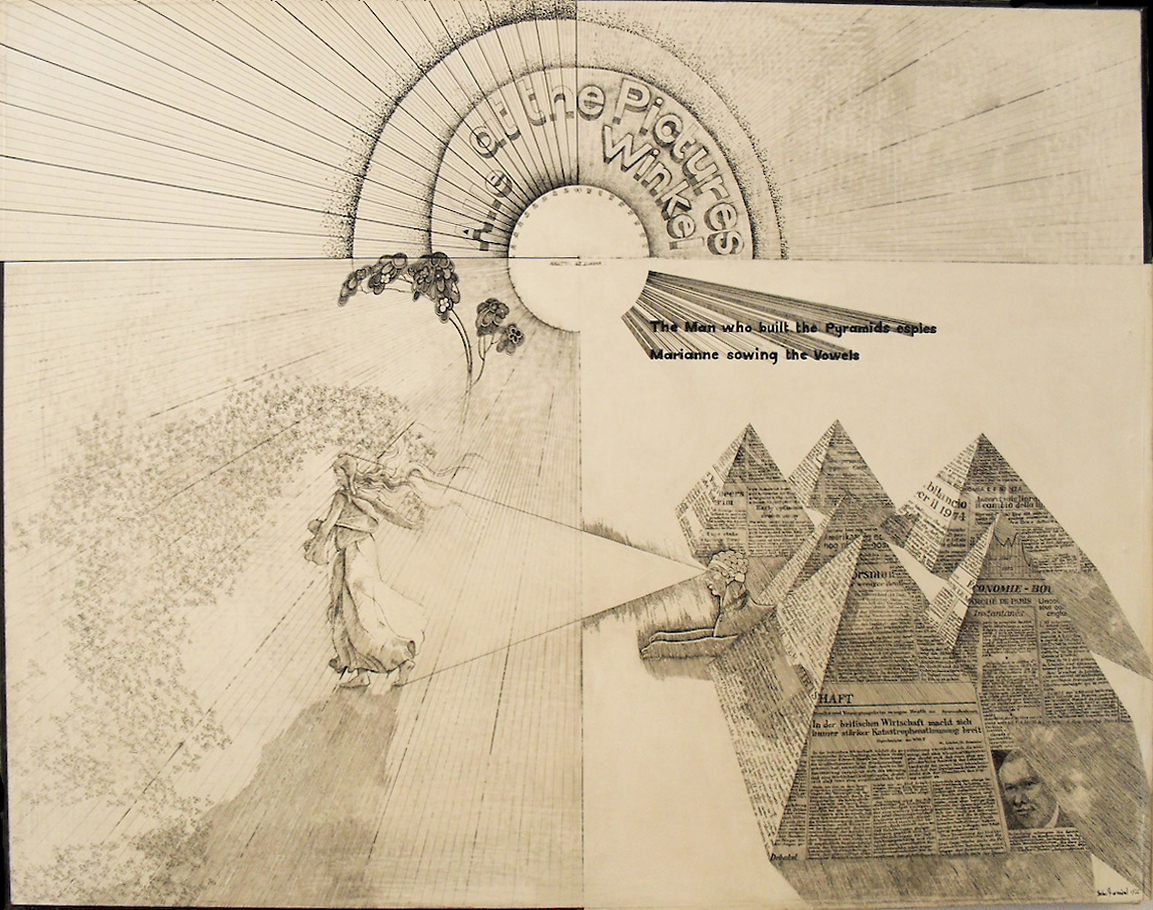
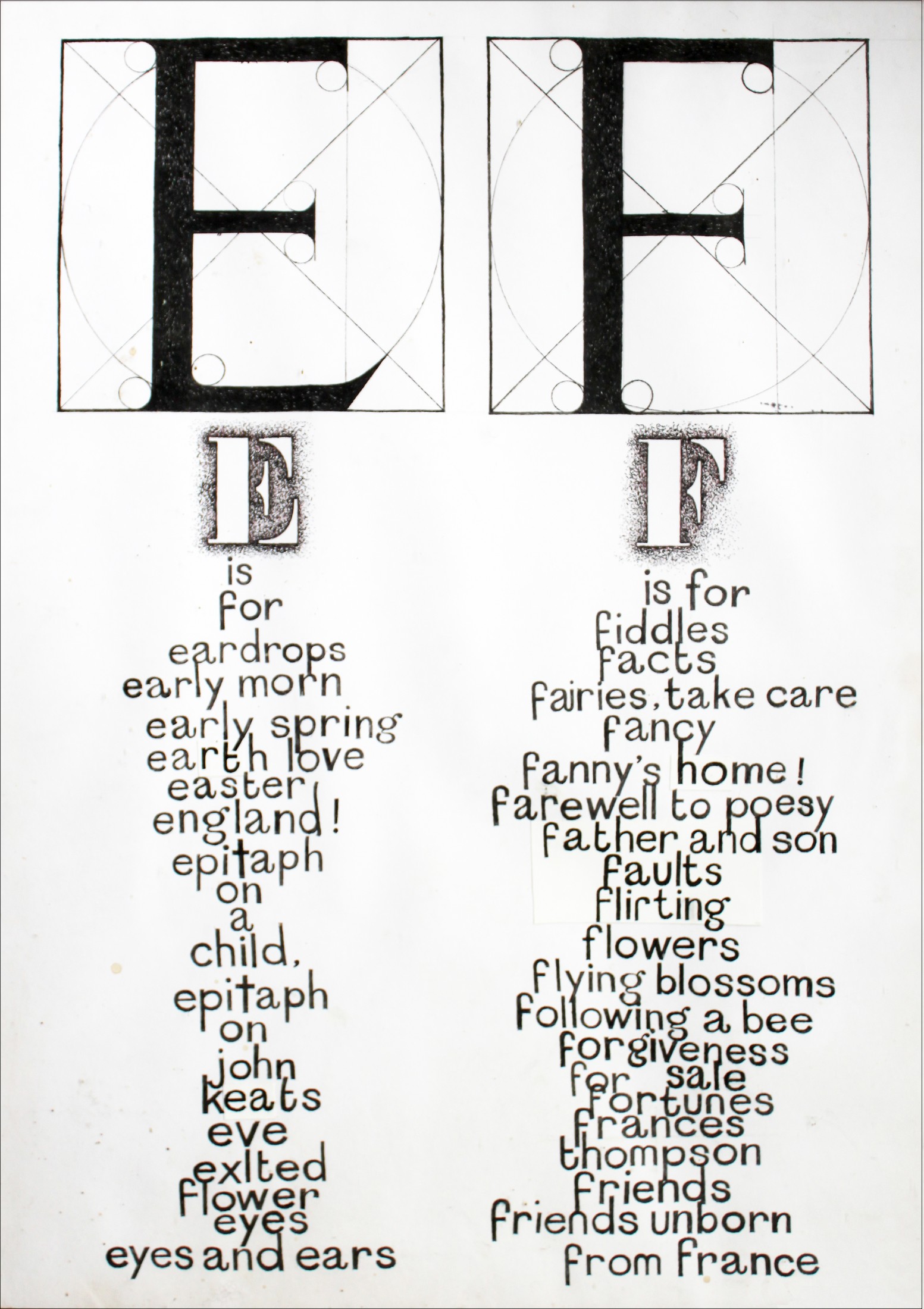
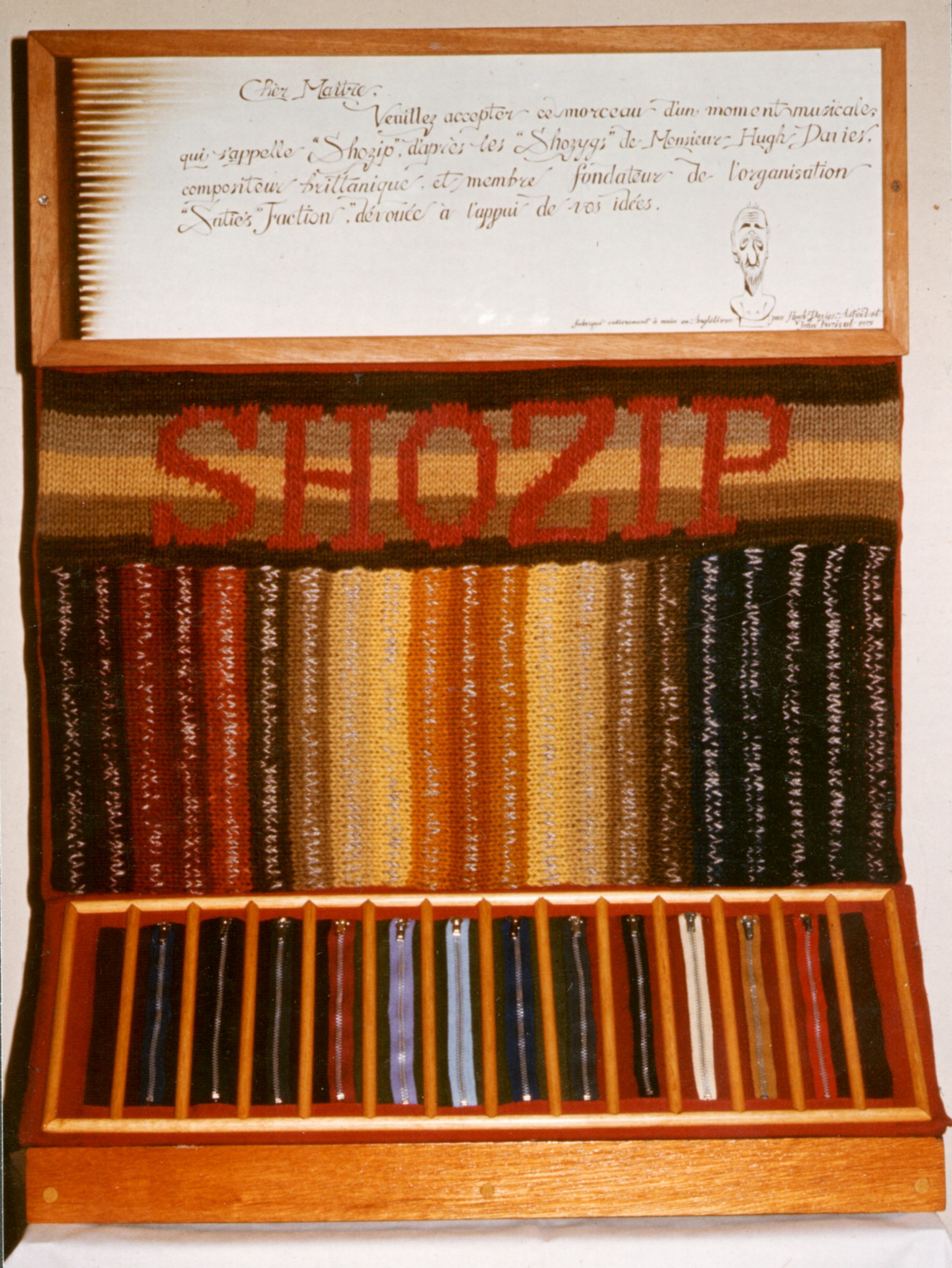
.jpg)
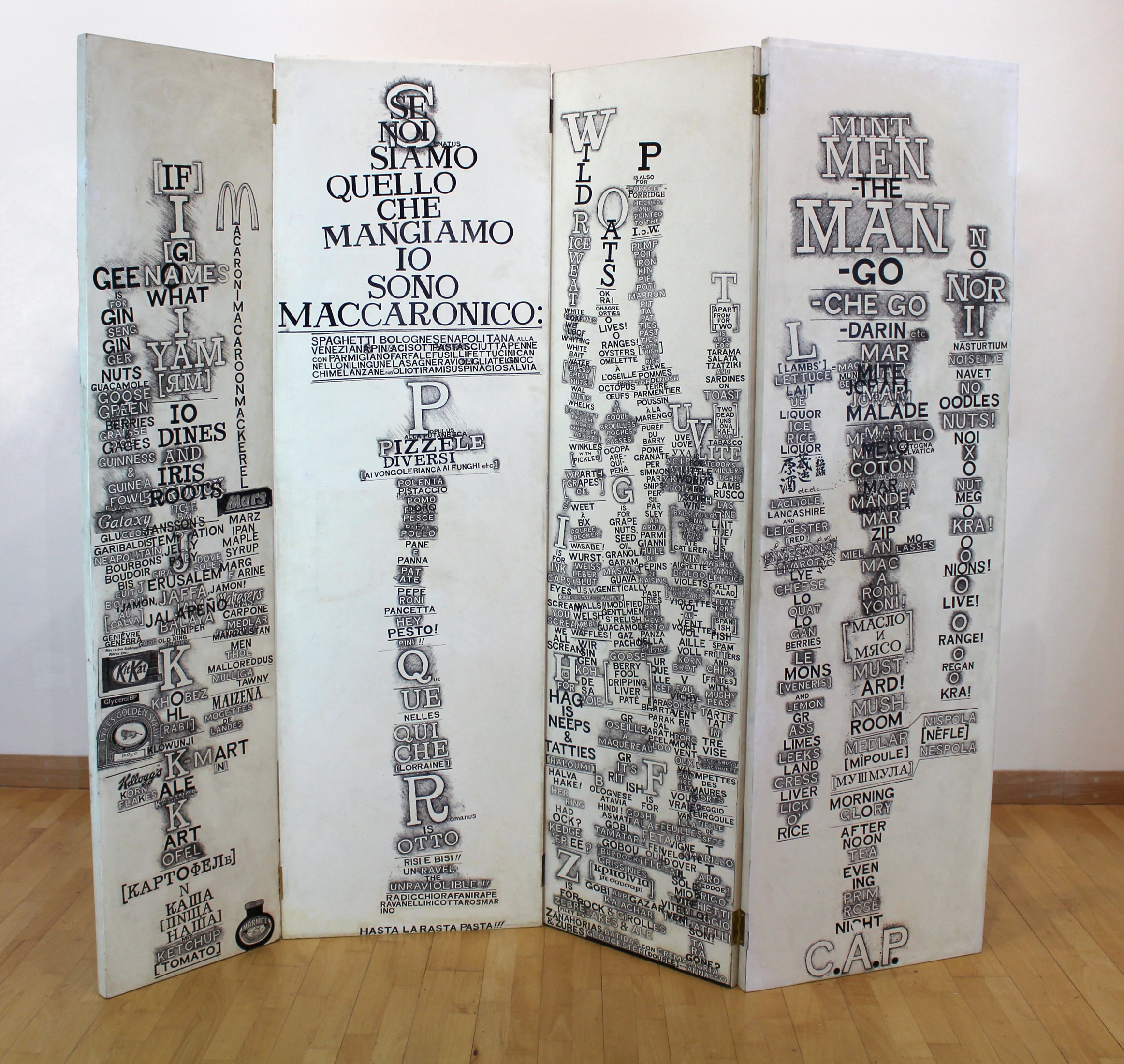
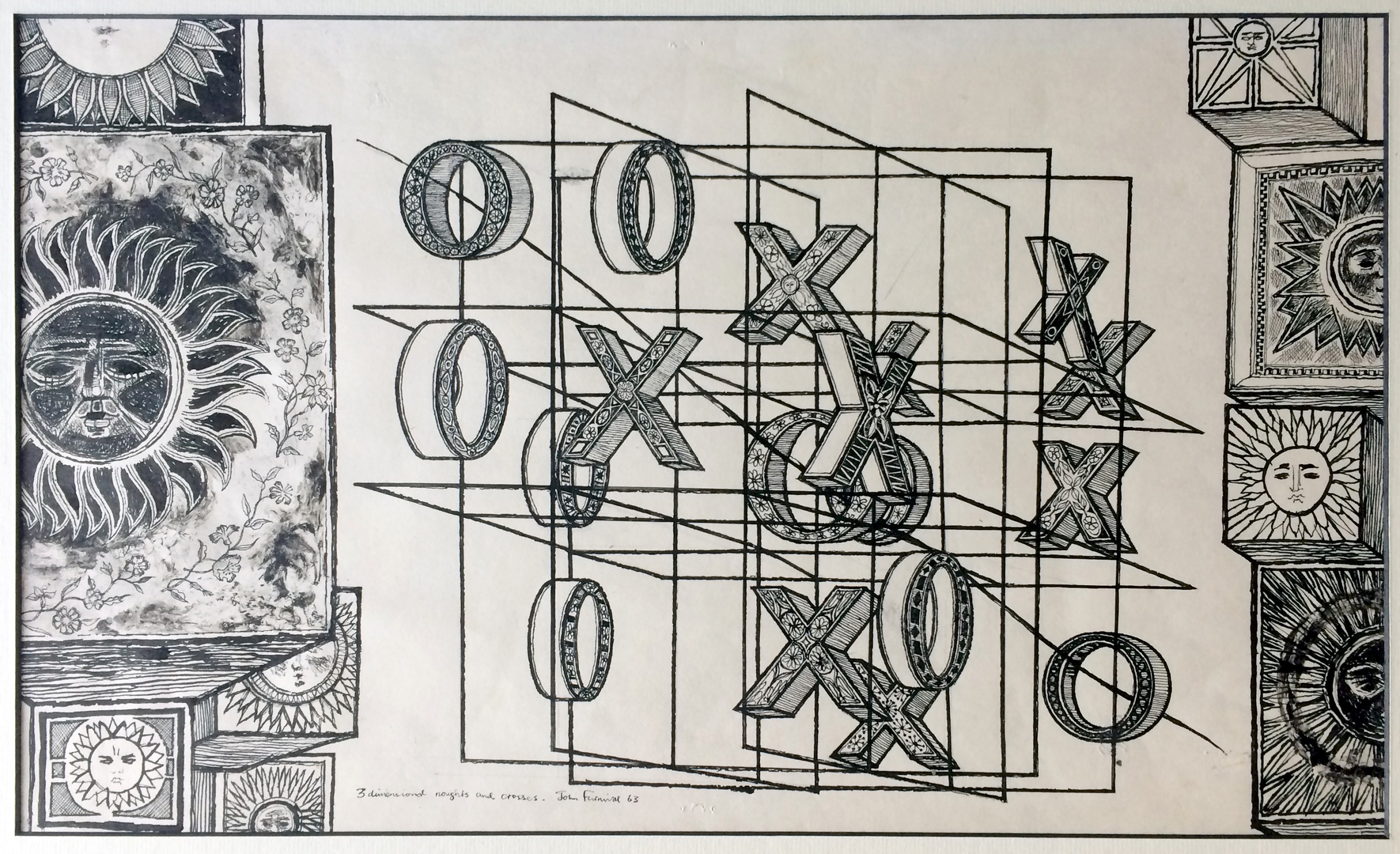
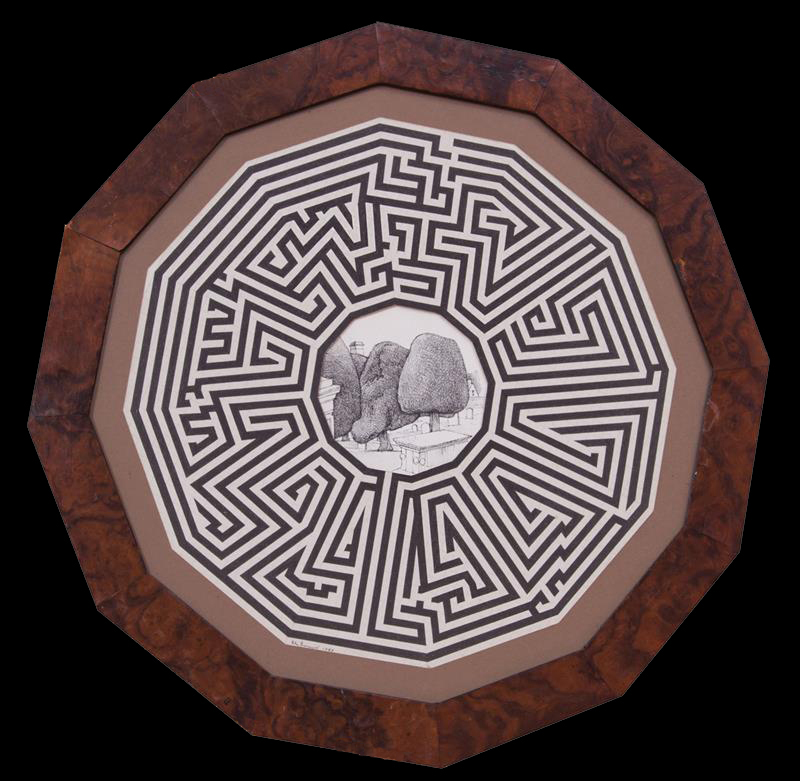
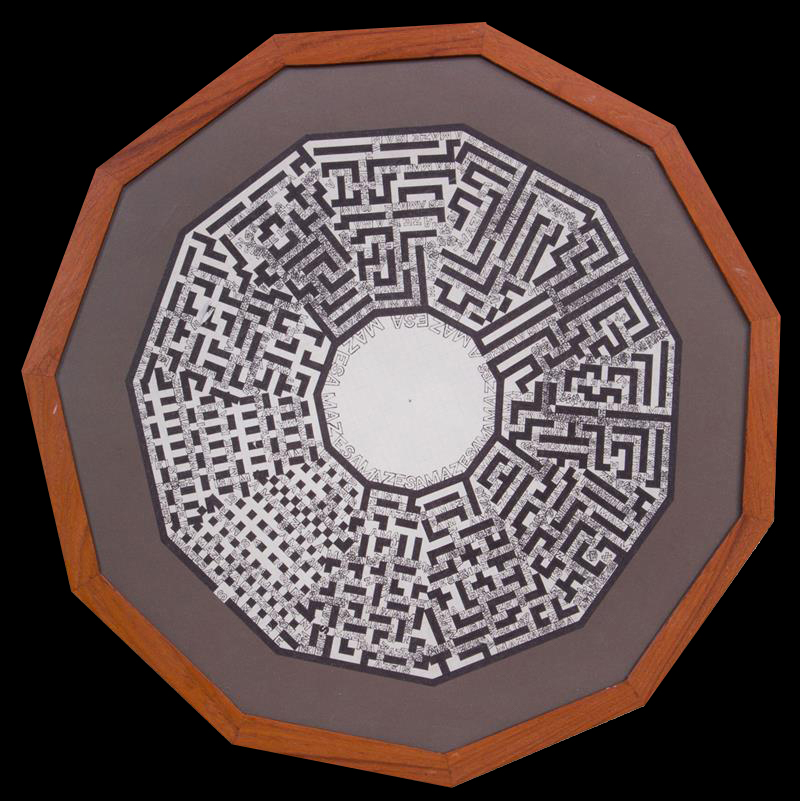
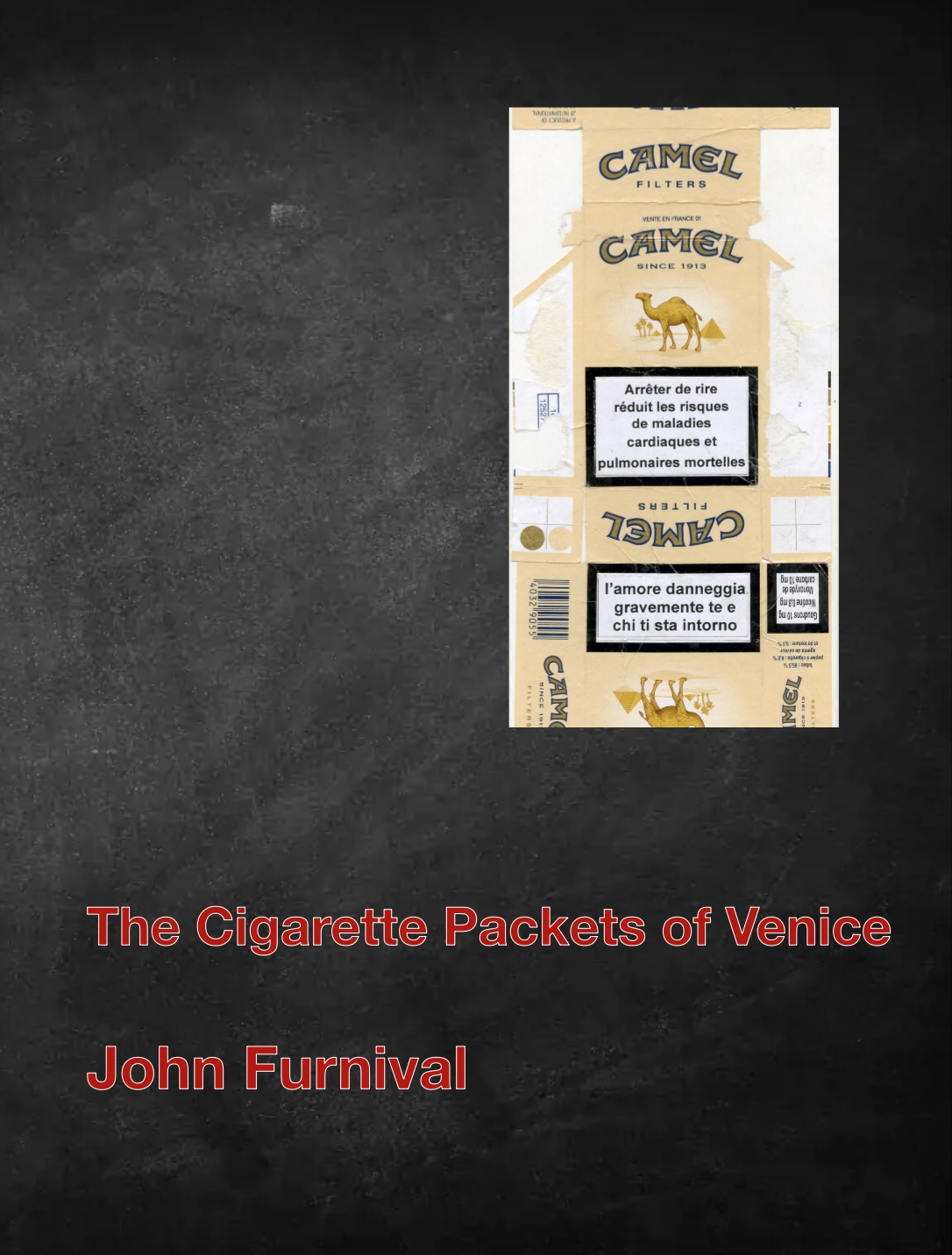
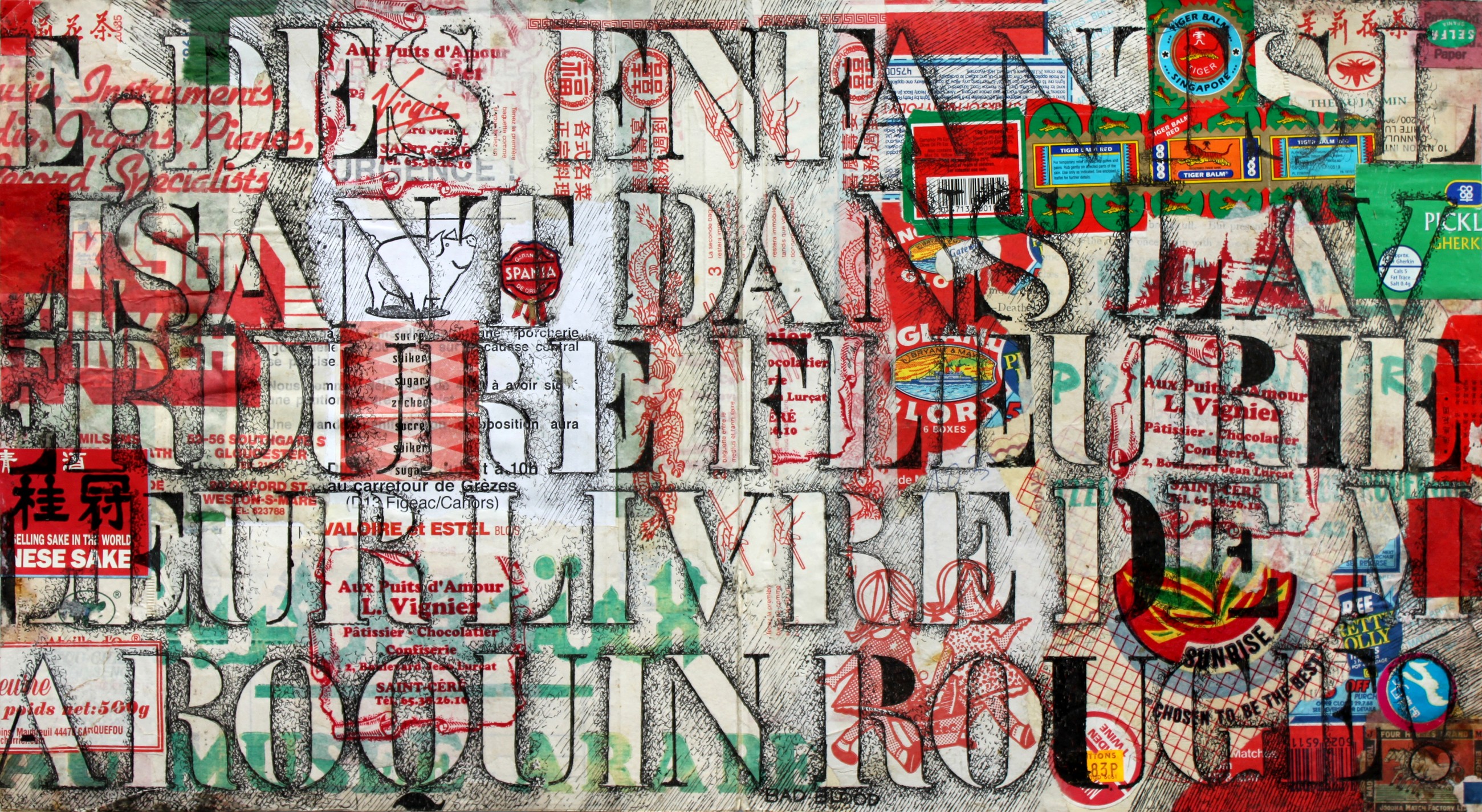
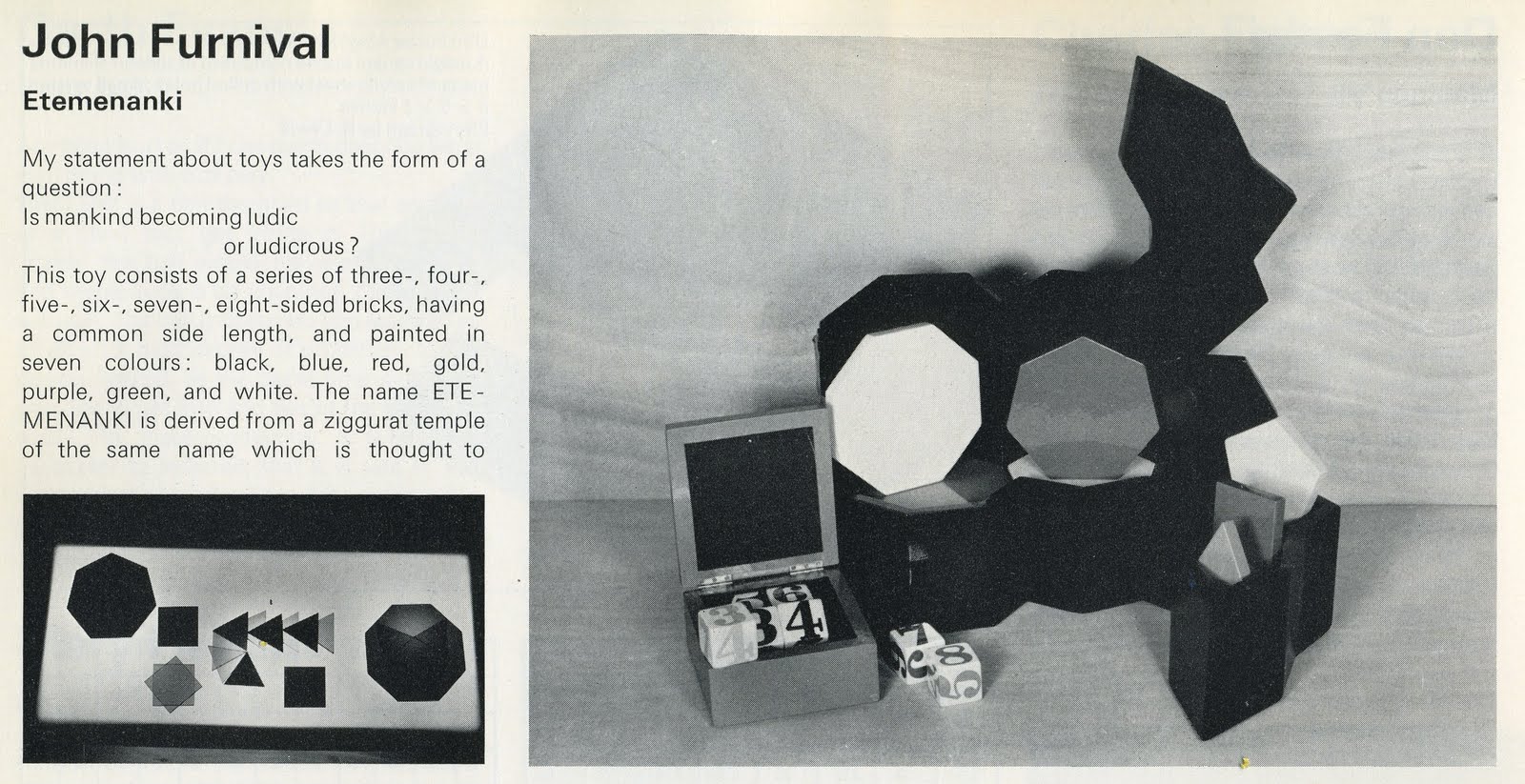
.jpg)
